As unbelievable as it seems, my little (now big) guy started second grade two weeks ago, and with that milestone we entered into our THIRD year of homeschooling. If we ever had any doubts about whether or not homeschooling was a good option for our family, they have been almost entirely quelled over the past two years. Homeschooling certainly isn’t for everyone, and I completely respect other families’ different schooling choices.* For us, homeschooling is the best fit for our family schedule, culture, and values. With my background as a teacher, combined with the fact that I’m a full-time stay-at-home mom, I have both the qualifications and the time to be Resident Educator of our home. Thankfully homeschooling seems to be a good fit for Charleston’s personality, and here’s hoping it works out for the twins too!
I love the flexibility homeschooling offers and the fact that we have complete agency over what and how our children are learning. (Here in Texas, we don’t even have to report that we are schooling at home, let alone provide our plans. It really is entirely up to us.) Of course circumstances could change, but to answer a question I am always asked: yes, we do plan to homeschool all three children, hopefully all the way through high school!
The other questions we are regularly asked are 1) what curriculum do we use and 2) what does a school day look for us? I’ll be sharing all of that—and more—in this post.
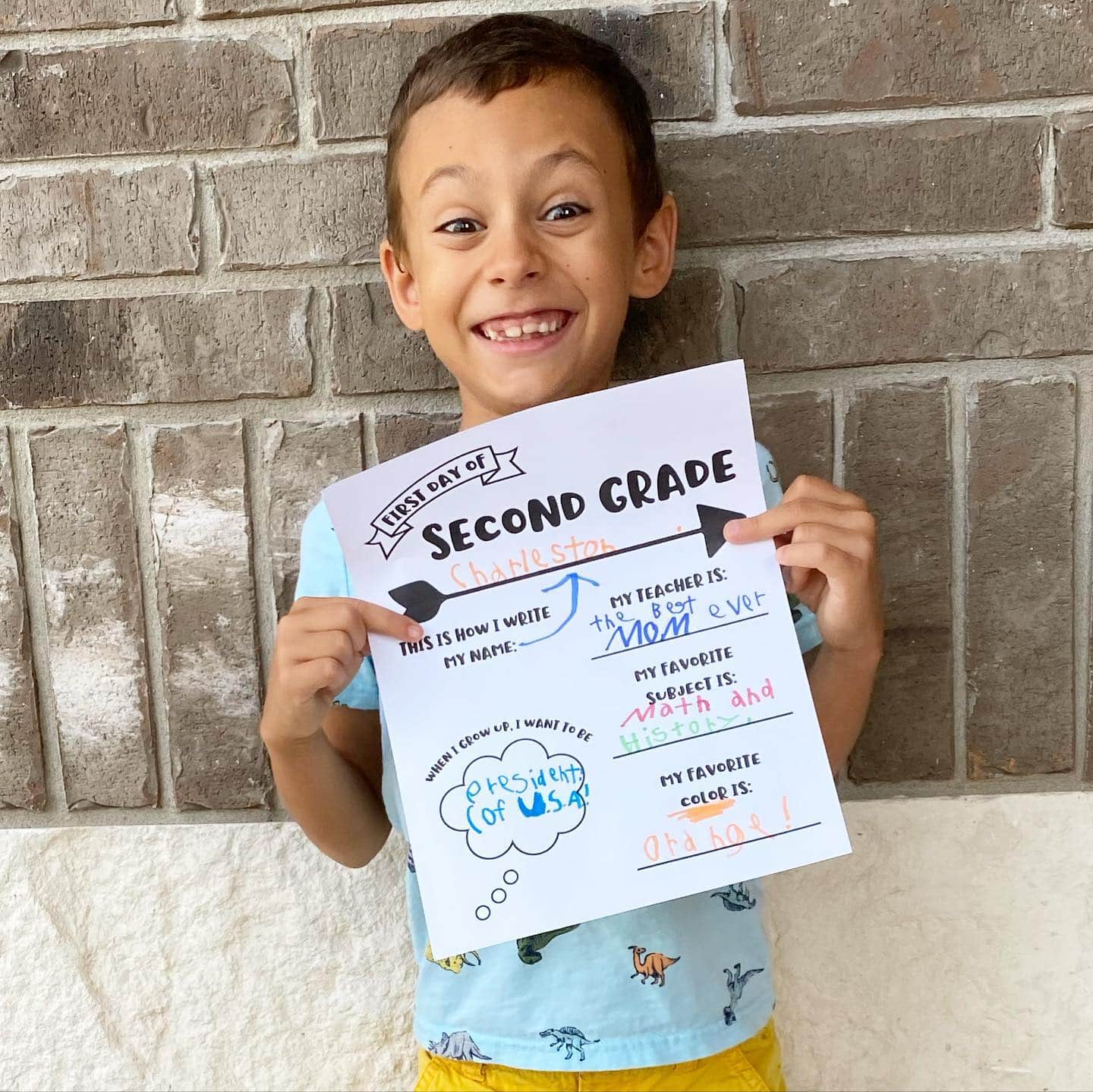
The Plan
We may be three years into this homeschooling gig, but every year has been different. We’ve made changes each school year to fit Charleston’s evolving academic needs and my own shifting expectations and desired level of involvement. This year a majority of our curriculum is from The Good and the Beautiful. After sampling their products last year for Math and Science, I fell in love with their resources that require no daily prep time and are relatively contained. (Unlike other programs that require several different books and materials for each subject, the Good and Beautiful curriculum is pretty streamlined.)
The Good and the Beautiful lives up to its name and its promise of providing curriculum that emphasizes family, God, high character, nature, and wholesome literature. Faith principles are woven into every subject, and all of the materials are aesthetically pleasing and fun for parents and students alike. Another amazing aspect to The Good and the Beautiful is that most of its curriculum is either free or extremely affordable! We chose to purchase the physical curriculum (as opposed to utilizing the free online pdfs) this year, but even these are much less expansive than other homeschool curriculums we’ve used and the quality is much higher. My one caveat with The Good and the Beautiful is that the material is not very challenging, but it provides us with the basics, and I am able to supplement with my own resources when we have a light day or the concepts are too easy for Charleston.
Okay, I’ll stop gushing about The Good and the Beautiful now and get into the specifics of which resources we are using and which subjects we are covering in this Second Grade school year.
LANGUAGE ARTS: Level 2 Language Arts Course Set (which includes a course guide, reading booster cards, and readers). This incredible curriculum covers reading, phonics. writing, spelling, literature, grammar, and punctuation and provides a daily lesson, review, and independent work. I really like that each of the subjects are integrated as opposed to using separate resources for reading, spelling, etc. We do one lesson every weekday.
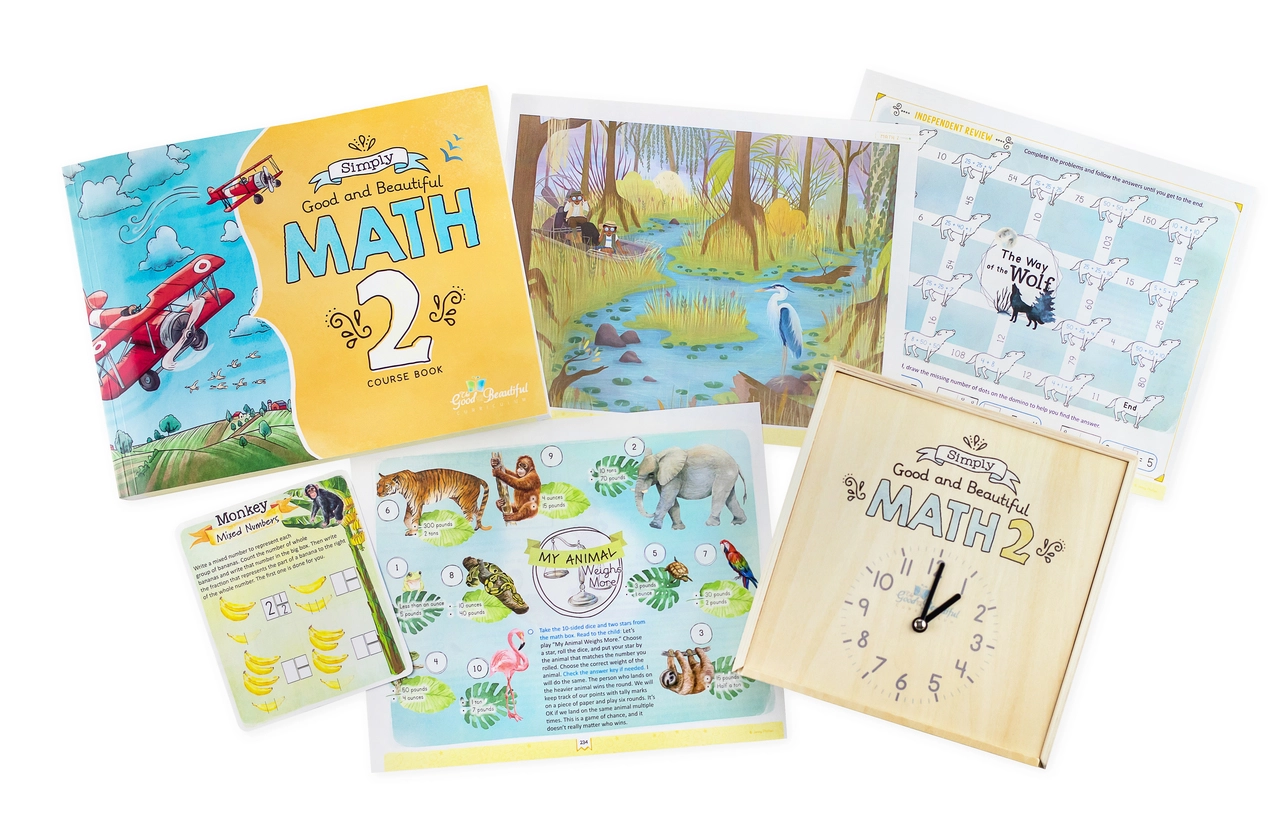
MATH: Math 2 Course Set (includes a course guide and an adorable manipulatives box that includes materials used in each hands-on lesson). We did the first half of this curriculum last year and are picking up at the mid-way point, with plans to start Math 3 when we finish. Since the expected independent work is very short, I supplement with a few daily pages from a printable math workbook like this one. We do one lesson every weekday.
HANDWRITING: The Good and the Beautiful Handwriting Level 2 Workbook (works on refining print formation, since Charleston isn’t quite ready to move on to cursive yet). Charleston does one page every Monday, Wednesday, and Friday.
LITERATURE: I’m selecting our read-alouds this year. First up is Charlotte’s Web! The plan is to read together and work through a corresponding unit study (we are using this one for Charlotte’s Web). At the end of each book Charleston will give an oral book report (that I video and share with family and friends) and record a brief review in his Reading Journal (we both LOVE this new journal from Anne Bogel!). Charleston gets to pick his own independent reads (currently he’s on a Magic Treehouse kick) which he also records in his Reading Journal. We read at least one chapter of our read-aloud every weekday and Charleston does thirty minutes of independent reading every day.
JOURNAL: This is very unstructured. Each day I give Charleston a journal or story prompt (often one that ties into current events or activities, or that day’s curriculum) and he responds in his composition notebook during his independent work time. When he’s done writing, we work together to edit it for spelling and grammar. I’d like to flesh this out into a more formal writing plan in the future; for now, we are mostly just giving him practice with penmanship, general writing mechanics, and creative thinking. Charleston gets journal assignments on Mondays, Wednesdays, and Fridays.
SCIENCE: Science for Little Hearts and Hands (includes a course guide and corresponding storybook). This curriculum is meant to be done family-style, and since it’s designed for preschool-2nd grade we are doing it along with the twins. So far the whole-family approach has been great! Each lesson incorporates a story or video, as well as a hands-on activity, all of which is perfect for the twins to join in on. The content and questions are also age-appropriate for Charleston, and I will bring in extra resources (books, videos, experiments) to challenge him if needed. We do science lessons as a family every Friday.
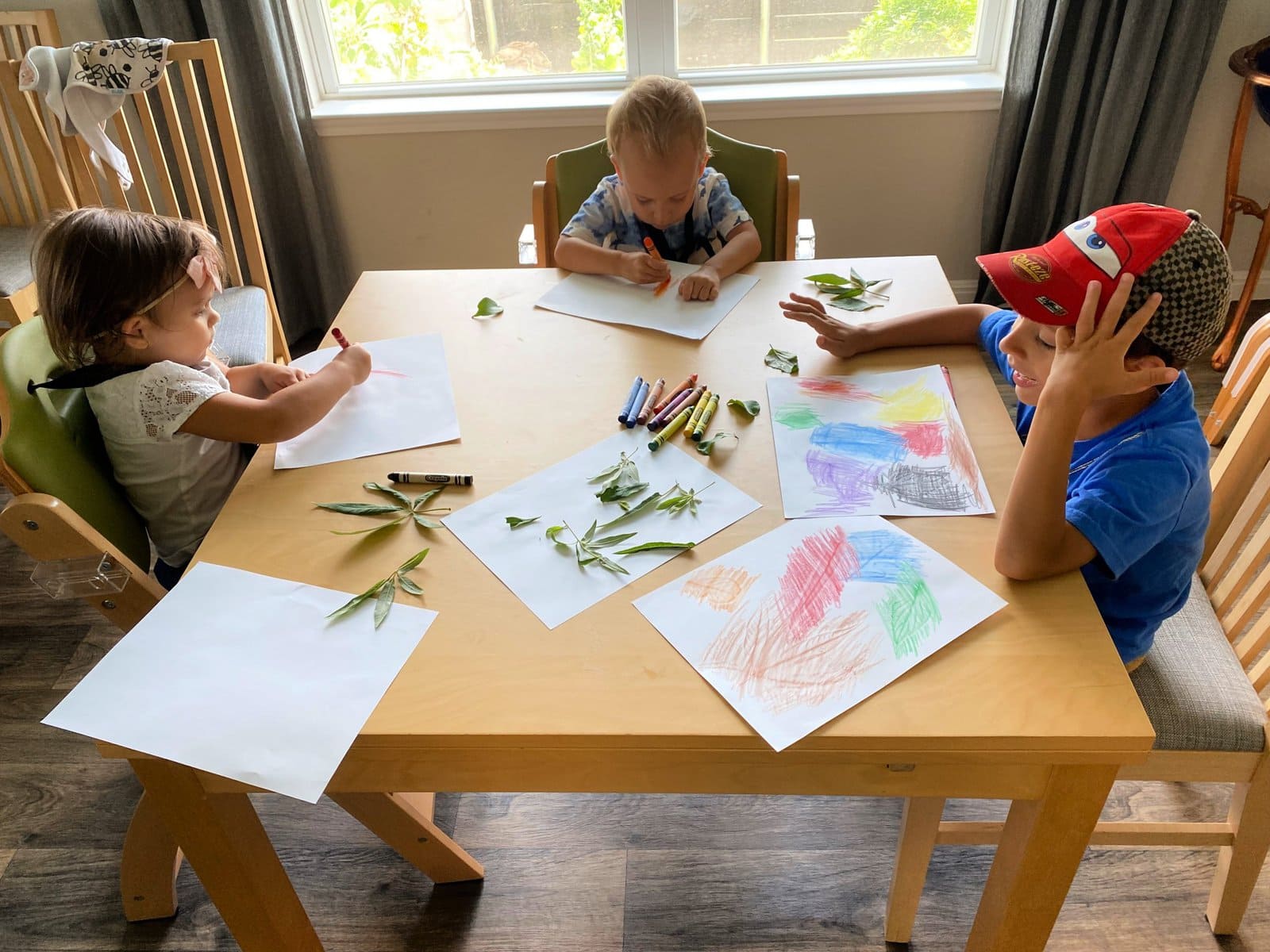
HISTORY: The Good and the Beautiful History 1 Course Set (includes a course guide, grade-specific student workbook, book of history stories, and a history game). This is also a family-style curriculum and the twins have enjoyed listening to the stories and watching the videos along with us while Charleston works through the explorer guide that is designed for his grade level. The guide also provides recommendations for History-related memory work (we are beginning with the Declaration of Independence). The program covers ancient through modern history, zooming in on different time periods and places for a more in-depth exploration. I’m supplementing with other read-alouds, activities, and videos that correspond to the lesson. We do history lessons as a family on Monday and Wednesday, and Charleston works on his History memory work every weekday.
BIBLE: Since Bible reading is woven into the other subjects we are doing, we don’t have an official Bible curriculum this year. We still read from our Egermeier’s Bible Story Book as a family every day, and each morning we practice the memory verse Charleston has gotten from church that week.
KEYBOARD: We will eventually enroll Charleston in private piano lessons. For now, he is learning the basics with the the Simply Piano program. We have multiple accounts, so Luke and I are doing it too! Charleston practices keyboard for 15 minutes every weekday.
ADDITIONAL ACTIVITIES: Charleston still attends his full-day enrichment program every Tuesday; there he learns Art, Spanish, Music, PE, Character Building, and Science and gets that “real” school experience. (It’s just enough for him to practice his social skills and know that he likes school, but only in small doses!) He also attends a weekly PE program for homeschoolers, where he is introduced to a variety of sports and other outdoor games. And once per month he attends an all-day Wilderness Camp where he gets to explore nature and learn survival skills.
OTHER RESOURCES:
60-Minute Visual Timer (We use this to keep Charleston on task with independent assignments and to keep time for his independent reading.)
Melissa and Doug Daily Magnetic Calendar
The Usborne First Illustrated Thesaurus
Merriam-Webster’s Elementary Dictionary
A Well-Used Library Card!
Magnetic Letters and Whiteboard Kit (Great for spelling practice.)
Subscriptions to Clubhouse and Ranger Rick Jr. Magazines
Monthly Illustrated Biographies from Heroes of Liberty
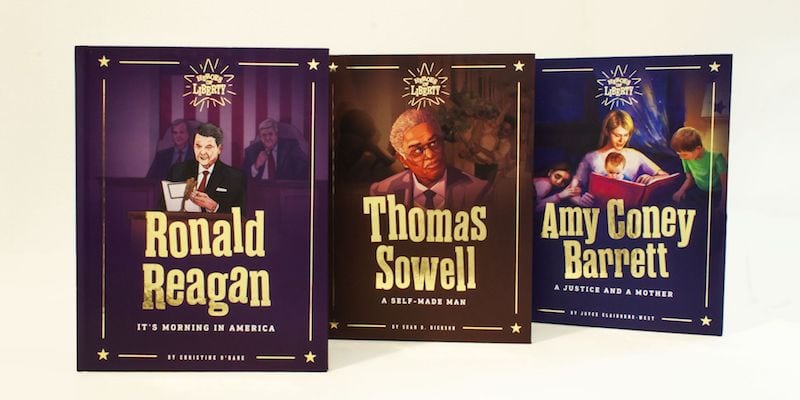
A Day of Homeschooling
6:00—Charleston gets up. Last year we tried beginning school the second Charleston rolled out of bed, but we learned that he needs a little more downtime before getting started. This year we are having much more success with my waking him about half an hour before our start time so he has a chance to read, listen to Adventures in Odyssey, play, color, and get ready for the day.
6:30/7:00—If the twins are still sleeping at 6:30, that’s our start time, and we break when they wake up so I can nurse and change them and get them settled into playtime in their room. However, they usually are waking up right at 6:30, so I get them situated first and we begin school at 7:00.
The twins play in their room (supervised by Luke on the Nest camera while he gets ready) while we do our school.
7:00-7:15—We start our day with prayer, the Pledge of Allegiance, and recitation of the Apostle’s Creed. We also work on that week’s memory verse and our History memory work (currently the Declaration of Independence) and Charleston changes the daily calendar.
7:15-7:30—Charleston does his handwriting practice while I read from our read aloud. Then we do the day’s corresponding literature activities. This is also when we add to his Reading Journal if he has finished a book. (On Tuesdays and Thursdays we skip this and jump straight to Language Arts and Math since we have to be out of the house by 8:30 on those days.)
7:30-8:00—Language Arts, including a daily lesson from the course guide. Charleston reads aloud a chapter from his reader and we practice his spelling booster cards.
8:00-8:30—Math, including a daily lesson from the course guide and practicing addition or subtraction math facts.
8:30—On Tuesdays and Thursdays, we are done with school work for the day by this time. On the other days, this is when I assign that day’s independent work (which he may work on until breakfast and in the afternoon while the twins nap). Independent assignments always include Journal and additional Math practice, as well as finishing up other assignments we didn’t complete together that morning.
8:45—Breakfast time. When I’m finished with my own food, I read aloud from our Bible.
9:30-12:00—Morning outing (usually the gym, Bible study, or a play date).
12:30—Lunch time. While the kids eat we do our History (Monday and Wednesday) or Science (Friday) lessons. We do the hands-on portions of these subjects as soon as they complete their food.
2:30—While the twins nap, Charleston works on his independent assignments, does thirty minutes of silent reading time, and practices keyboard.
And there you have it: a full day of learning for Mrs. Jernejcic’s Second Grade Class. Some days I feel like we aren’t doing nearly enough, other days it seems like too much, so I’ll go with my gut and assume the amount of material we are covering is just about right. Of course my inner teacher can’t help but incorporate learning into all aspects of life with all three of my kids; just because the school day has wrapped doesn’t mean the education isn’t continuing!
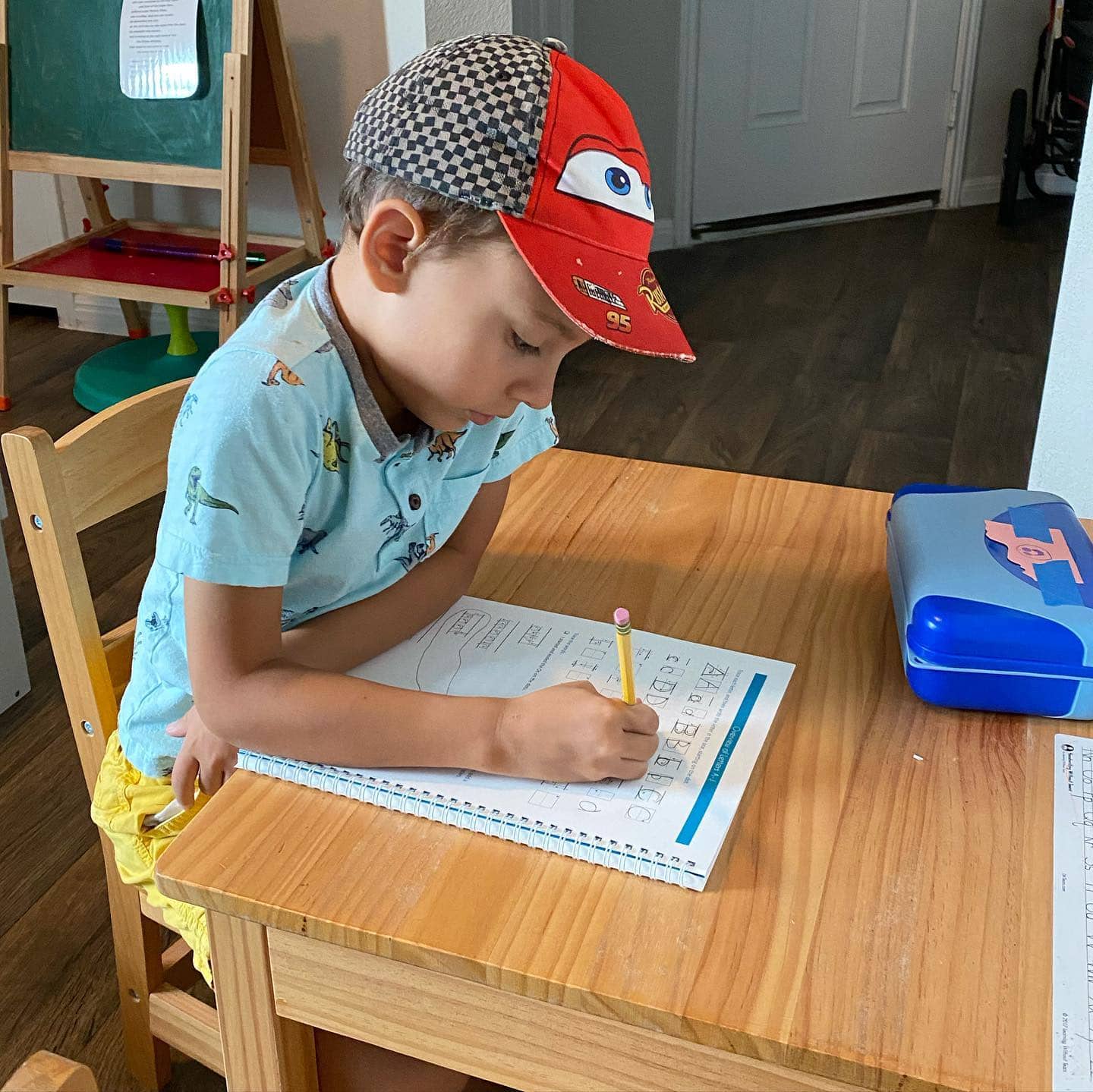
If you have questions about any aspects of our homeschooling or specific curriculum choices, please reach out; I would LOVE to talk more! And if you are a homeschooling family, please share your plans for this school year. I’m always eager to hear what works and doesn’t for each family.
*In saying this, I’m not just blowing smoke or trying to appear accepting; there are truly many fantastic school options out there, and simply because WE are a homeschooling family does not mean I am anti-school or that I think all children should be schooled at home. Nothing about this post is intended to be critical or perspective in any way!